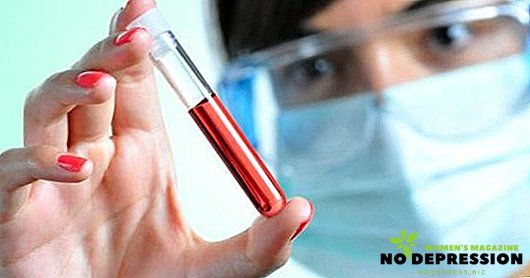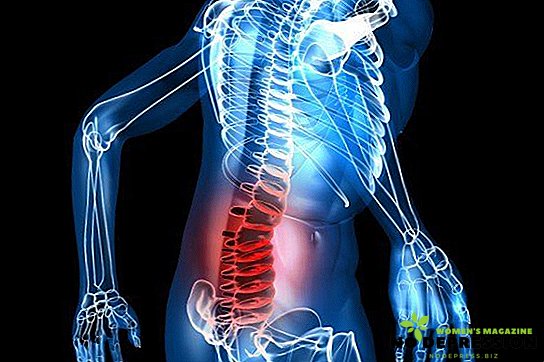Hemoglobin is an iron-containing blood protein that, by binding with oxygen, ensures the normal functioning of organs. Therefore, the knowledge of its norms is so important in medicine.

Norm hemoglobin in the blood of women by age
A blood test for hemoglobin is one of the most important in the examination of patients. In accordance with the obtained indicators, it is possible to judge one or another pathological condition, which greatly facilitates the diagnosis.
But the performance of this compound is not always stable, even in the absence of pathology. They can be influenced by various factors, one of which is the age of a person. Therefore, it is necessary to know exactly its normal values in a certain period of life.
Below are the normal indicators of this substance in women, expressed in standard units of measure - g / l (gram per liter), depending on age.
| Age | Hemoglobin level (g / l) |
|---|---|
| Up to 2 weeks. | 135 to 200 |
| From 2 weeks. up to 1 month | From 115 to 180 |
| From 1 to 2 months. | From 90 to 130 |
| From 2 to 6 months | 95 to 140 |
| From 6 to 12 months. | 105 to 140 |
| From 1 to 5 years | From 100 to 140 |
| From 5 to 12 years | 115 to 145 |
| From 12 to 15 years | 112 to 152 |
| 15 to 18 years old | 115 to 153 |
| From 18 to 65 years | 120 to 155 |
| More than 65 years | 120 to 157 |
It is noticeable that this indicator is not distinguished by a rigid framework. Therefore, there is no cause for concern if the data will fluctuate within 10-15 units from the indicated age norms. You should also be aware that an increase in hemoglobin concentration is characteristic of with age.
What is glycated hemoglobin
This name is a special type of protein that is associated with glucose molecules in the blood. In each person's body, this type of substance is present.
The considered compound determines the average level of glucose in the blood over a long period of time (3 months).
The study of the concentration of such hemoglobin makes it possible to diagnose diabetes mellitus with a high probability, as well as monitor the course of the disease, correct the prescribed treatment and predict the outcome of the disease. For this you need to regularly pass the appropriate analysis.
How to take an analysis
Before the procedure, you do not need to follow such strict preparation rules as when you take a standard test for blood sugar levels.
But there are several mandatory conditions, non-compliance with which may distort the results:
- Avoid blood loss (it is better not to carry out the procedure during menstruation).
- Do not take drugs that inhibit the formation of red blood cells (blood cells containing hemoglobin).
The examination itself consists of collecting 3 ml of blood from the cubital vein with a syringe. And then the sample is sent to the laboratory. Ready data can be obtained in a few days.
Norm in women
Indicators of this compound are especially important for patients with diabetes and pregnant women. Obtained in the study data are expressed as a percentage of normal hemoglobin. So what are they?
| Age | Norm | Tolerances | Inadmissible Deviations |
|---|---|---|---|
| Up to 40 years | Less than 6.5% | 6,5-7% | More than 7% |
| 45-60 years old | Less than 7% | 7-7,5% | More than 7.5% |
| Over 65 years old | Less than 7.5% | 7,5-8% | More than 8% |
Due to the physiological increase in the hemoglobin content in the body, the amount of its glucose-related fraction is also increasing. However, a sharp increase in its concentration or the presence of unacceptable deviations in the analysis require the consultation of the appropriate specialist or changes in treatment tactics.
Pregnancy rates
Pregnant women have significant changes in the hormonal background, which leads to specific changes in the usual functioning of many organs and systems. Including the amount of hemoglobin varies.
The performance of this protein varies for two reasons:
- an increase in blood circulating in the body;
- physiological fluid retention in the body.
 In this regard, there is a dilution of blood, which leads to a decrease in the level of hemoglobin. So, if a woman of child-bearing age, the indicators of this substance are in the range of 120-130 g / l, then in pregnant women, its decrease to 110-115 g / l is normal.
In this regard, there is a dilution of blood, which leads to a decrease in the level of hemoglobin. So, if a woman of child-bearing age, the indicators of this substance are in the range of 120-130 g / l, then in pregnant women, its decrease to 110-115 g / l is normal.
Particularly important for the health of the future mother and child is to maintain indicators not lower than those indicated. Therefore, pregnant women should regularly undergo all medical examinations.
If there are deviations from the norm, treatment with drugs that increase hemoglobin level is prescribed in a medical institution or at home with a mandatory visit to the attending physician.
High level
An increase in the concentration of this compound is often marked with an increase in the number or change in the shape of red blood cells. It can be considered that such a state is beneficial for the organism, however this phenomenon is nothing but pathology.
All residents of the highlands noted an excess of the level of this substance, which is associated with adaptive processes developing in thin air with low oxygen content.
In this way, the body provides the normal saturation of tissues with oxygen. In the case of a change in habitat to a place with a normal oxygen content, there is a gradual decrease in the level of iron-containing protein in the blood.
Also a possible cause of a high hemoglobin content may be an increase in its glycated fraction. In this case, you must pass a blood test and pass a standard examination for the presence of diabetes.
In children, especially newborns, there is a significant increase in hemoglobin concentration. It should be noted that athletes have consistently elevated levels of this protein, which is associated with intense physical exertion.
What does the low level mean
A decrease in the level of this protein is observed much more often than an increase. This condition is called anemia. The reasons for it are quite diverse, but the main ones are considered:

- Violation of blood in the bone marrow.
- Excessive breakdown of red blood cells.
- Diseases of the digestive system.
- Compliance with extremely strict diets.
- Blood loss (including during menstruation).
- Endocrine disruption.
Stress plays an important role in the development of this state. Permanent nerve overstrains can inhibit appetite, which leads to nutritional (nutritional) iron deficiency in the body and a decrease in the production of iron-containing protein.
In medical practice, it is customary to classify anemia by degrees depending on the severity of hemoglobin deficiency:
- mild anemia - protein content less than 90 grams per liter;
- moderate anemia - 70-90 grams per liter;
- severe anemia - below 70 grams per liter.
Pathological reduction in protein concentration is accompanied by characteristic symptoms. It can manifest itself in the form of minor malaise with a mild degree, as well as in the form of changes characteristic of more severe stages: problems with the skin, digestive tract, disturbances of consciousness, problems with the menstrual cycle, loss of teeth and nails.
How to return hemoglobin to normal
It is not human nature to pay attention to health until one or another disease develops. But any disease is much easier to prevent than to cure. To this end, various methods of prevention have been developed.
Prevention of anemia includes the following activities:
- Compliance with a rational diet.
- Maintain a high level of physical activity.
- Timely diagnosis and treatment of diseases.

Diet can be one of the ways to normalize the level of hemoglobin in the blood. To this end, should be consumed foods rich in iron. These include:
- vegetables and fruits with a high content of iron;
- dried mushrooms;
- seafood;
- meat products.
It is recommended to completely eliminate the use of tea and coffee.
Quite often there are cases when one diet is not enough. In this situation, come to the aid of special additives. These may be iron-containing complexes or products based on the blood of animals.
In cases where violations are not corrected by diet and taking special supplements, you must seek medical help. After a thorough examination, the specialist will be prescribed the appropriate treatment with iron-containing drugs. They contain significant doses of this substance in combination with components that affect their absorption.
Medicines are often prescribed for oral use, but depending on the stage of the pathology, injection forms (in the form of solutions for injections into a vein or muscle) are also used.
Conclusion
Hemoglobin provides human tissues and organs with oxygen. Any changes in its concentration lead to disruption of metabolic processes. Therefore, it is necessary to know the norms of its content, the possible causes of deviations and methods of adjustment.
Particular attention should be paid to pregnant women and patients with diabetes, since hemoglobin and its fractions are a key indicator of their health status.
If symptoms occur that indicate a change in the level of iron-containing protein, you should seek medical help.












